
Day of the Dead: How to Celebrate Mexico’s Haunting Festival in James Bond Style
A riot of colour, costume and celebration helps Mexico look on the bright side of death
While James Bond was leaping across the rooftops of Mexico City in 2015’s 007 adventure Spectre, you may have noticed that the locals were dancing in the streets below, dressed as skeletons.
A little strange but, hey, that’s Bond. You may even have twigged that the occasion was Mexico’s Day of the Dead, the festival held between 31 October and 2 November each year to celebrate the lives of those who have passed away.
But, as is so often the case with our favourite international superspy, nothing is quite as it seems. This was actually the first time that Mexico City had held a street parade to celebrate Dia de los Muertos, as it is known locally, and they did so purely to lure Bond director Sam Mendes and his crew to film there.
Traditionally, the occasion is marked privately in the home. But in Mexico no festivity stays within four walls for long – impromptu street parties are not uncommon – and perhaps James Bond’s visit was just the excuse they needed.
Whatever the backstory, the Day of the Dead is one of the world’s great sights.
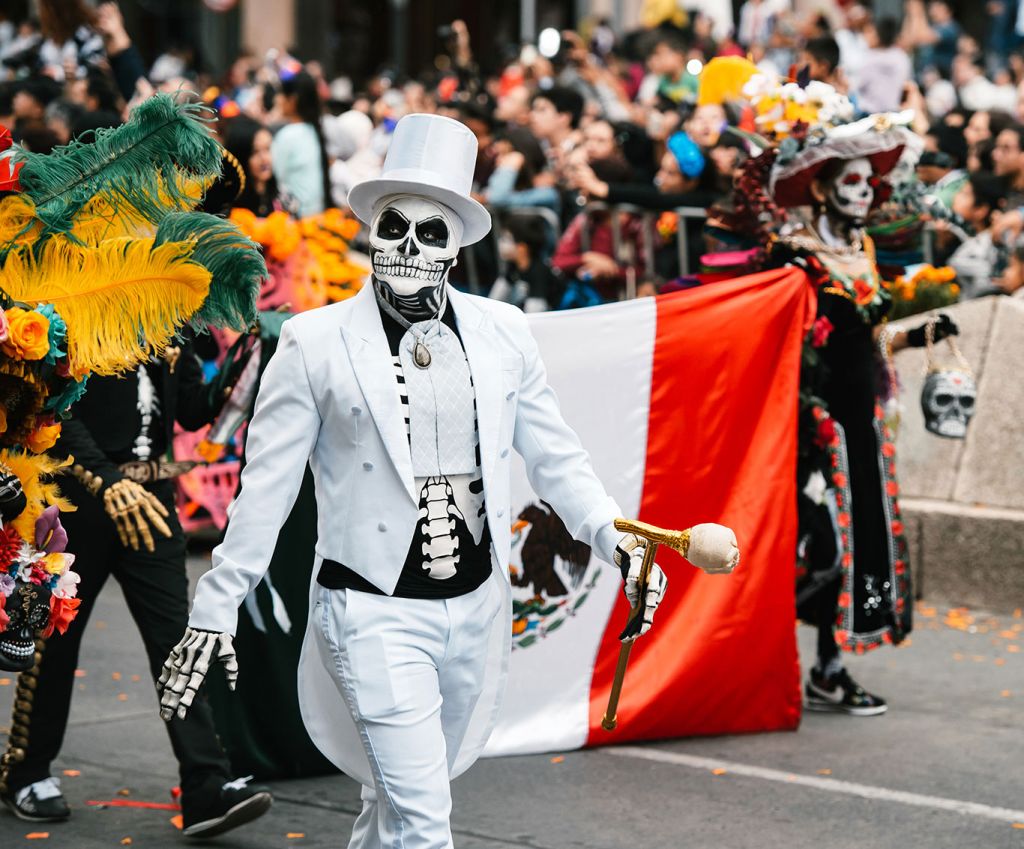
History and heritage
The street party may be a recent addition but the festival itself goes back thousands of years. Among the Aztec people, whose land this was before the Spanish arrived, the custom was to celebrate the lives of loved ones, rather than to mourn them.
Those who had passed away were merely beginning a journey to the afterlife – and it was the job of those left behind to keep their memory alive.
Such beliefs remain to this day, with Hispanic traditions added to the mix, and modern Mexicans see the Day of the Dead as a chance to celebrate their heritage. How do they do this? Well, the focal point of the celebration is the ofrenda – essentially an altar upon which the living offer gifts to the dead.
Ofrendas can be small, intimate affairs or hugely elaborate – but whatever form they take, candles are lit for each departed family member, whose favourite luxuries are placed around the altar, together with water to quench their thirst. It’s a little bit like making an extra effort to welcome an important visitor.
Every family’s ofrenda is unique and very personal, but they are all considered works of art, with some villages holding competitions to see who can create the best. One of the most widely used images associated with the Day of the Dead is the skull, or calavera.
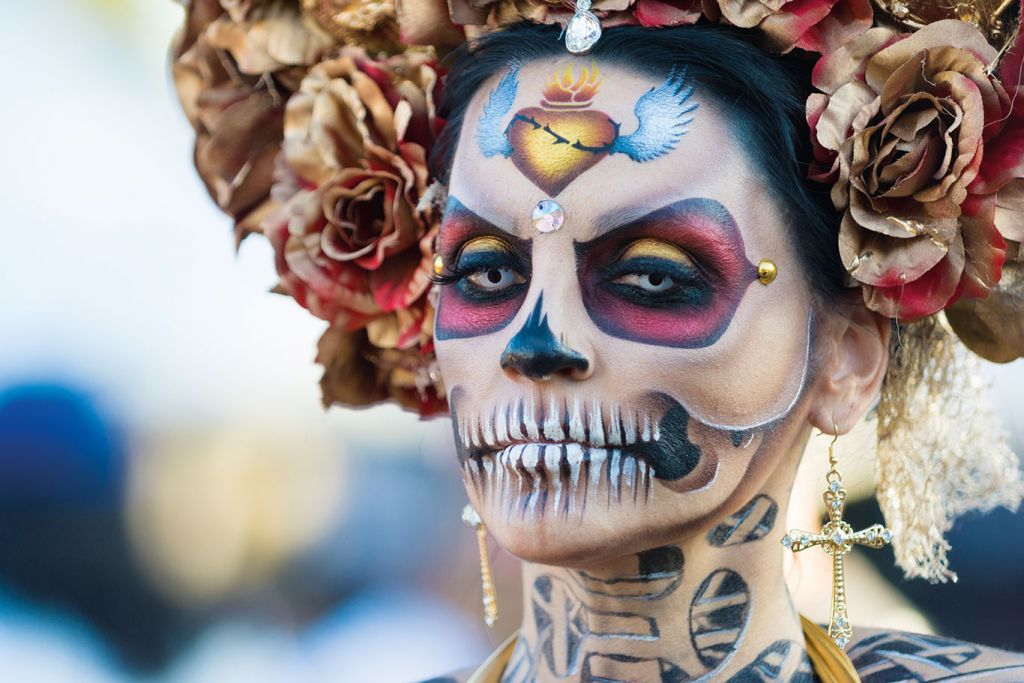
You’ll find caricatured versions of this everywhere in the form of sweet sugar skulls (a tongue-twister and tooth-rotter in equal measure), and locals will dress as ‘Calavera Catrina’ – a wealthy skeleton dreamed up by a satirical cartoonist (hence the fancy suits and hats you’ll see on the parade).
Naturally, with this being a festival there must be food to be enjoyed and shared around. So alongside the favourite delicacies found on the ofrenda – typically tamales, chocolate and mole, the dark, rich sauce that is one of Mexico’s culinary gifts to the world – you’ll find the seasonal speciality pan de muerto (bread of the dead).
This traditional sweet loaf, baked from late September through to the festival itself, is popular throughout the country, and is packed with symbolic meaning.
There are many variations on the recipe but most contain aniseed and orange zest for a punchy flavour, with decoration in the form of shaped pieces of dough to symbolise bones and tears. Sounds like quite a banquet, doesn’t it? But then if you had to feed the visiting souls of all the dead, you’d want to put on a good spread, too.
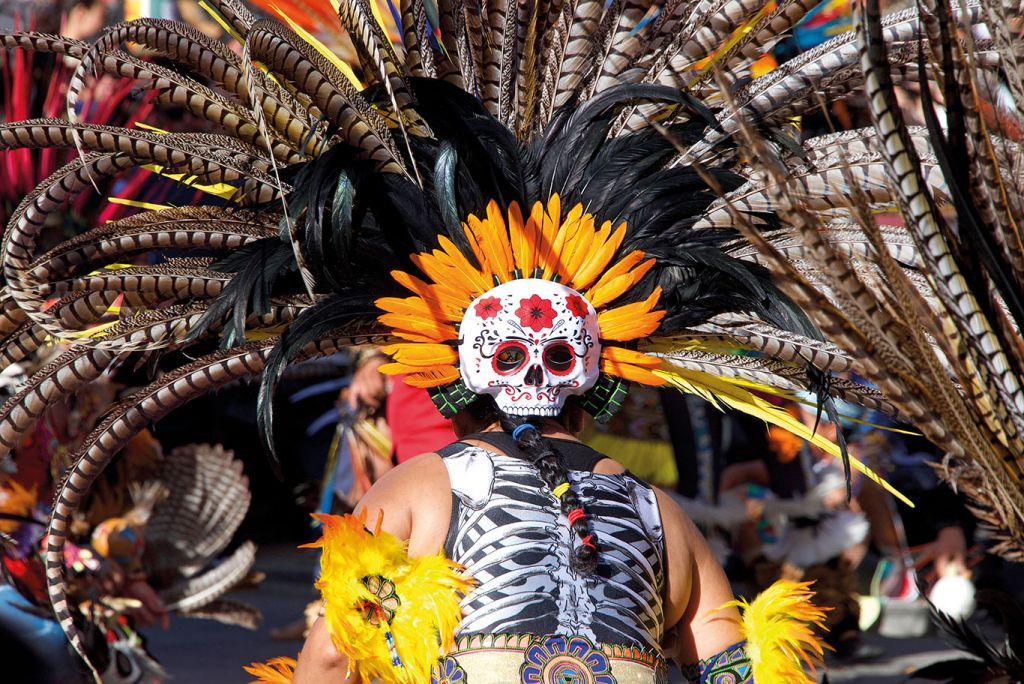
Key locations
The Day of the Dead is marked across Mexico, but the festival is most popular in the central and southern parts of the country. The cities to visit include Oaxaca (where the centre is a UNESCO World Heritage Site), San Miguel de Allende (which throws a week-long party in honour of the festival) and Mexico City itself.
Once you’ve arrived in your chosen location, you’ll want to scope out the nearest graveyard. Morbid? Absolutely, and it may even leave you feeling like you’ve entered into an episode of Scooby-Doo. But during the Day of the Dead it is quite common for Mexicans to spend the evening at the cemetery where their relatives are buried.
People will bring picnics to enjoy round the gravestone, songs will be sung, and the dancing can easily go on all night. But don’t let yourself get carried away – this may be a party but it’s still an emotional and private occasion, so always ask permission before taking photos, and consider hiring a guide to avoid any potential faux pas.
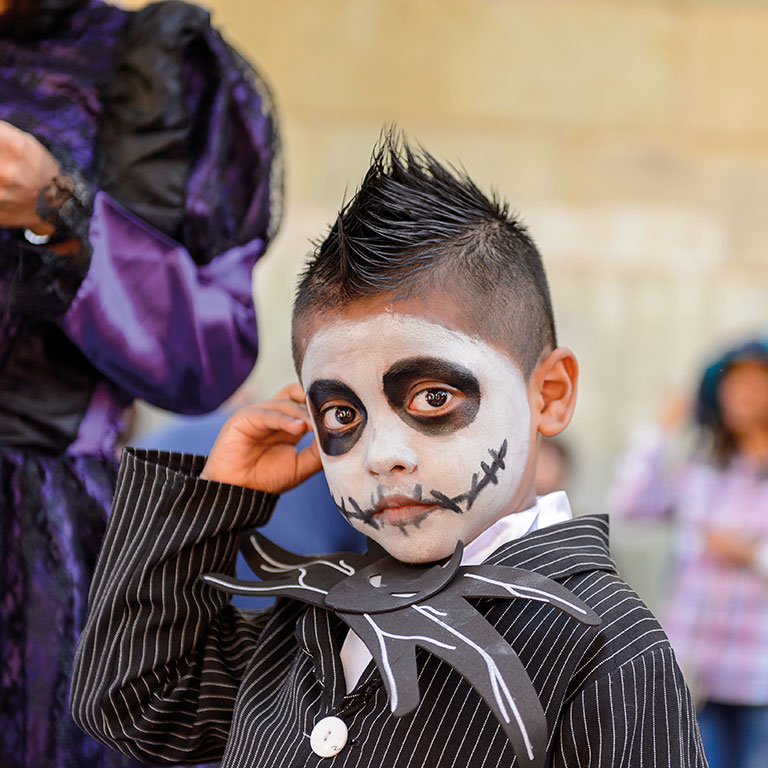
Fortunately though, you don’t need to hang around graveyards all night to have an enjoyable Day of the Dead experience.
Head to the major cities and you’ll find giant ofrendas in the major squares, where people will gather to pay their respects in the evening – often in fancy dress. And thanks to Mr Bond, there’s now that annual carnival in Mexico City, where you’ll be able to dance in the streets, take pictures of the parade and mingle with the locals.
It’s not the most spiritual of occasions, perhaps, but it is a lot of fun – and this festival has survived for so long precisely because it has adapted to the times.
For a more authentic Day of the Dead, you’ll want to head to the Michoacan region and the small islands found in Lake Patzcuaro, where local traditions remain strong and the ceremonies take on a quieter, more touching character.
How to get involved
Fittingly perhaps, the Day of the Dead only really hits its stride at nightfall. So if you want to join in with the singing, dancing and general merriment – and of course you do – then you’ll need an overnight in port.
But that’s easier said than done, as few cruise lines currently offer overnights on their Mexican citineraries, and in any case the best festivities take place in the central parts of the country, inconveniently far from the cruise ports.
Fortunately there are a couple of ways round this. The best is to book a pre or post-cruise stay, so you can experience all the thrills without worrying that you’re going to miss your ship (and face a Day of Reckoning with your furious family).
A pre-cruise stay is usually the better option, as most Mexican itineraries will take you back to the USA for disembarkation – perfect for those Florida flights home.
Alternatively, you can recreate the Day of the Dead at sea by taking a themed cruise with Disney Cruise Line, which visits the Baja Californian coastal city of Enspada, where they also celebrate the holiday – albeit it in a slightly touristy way – and you can stroll round the markets, picking up trinkets and souvenirs.
But no matter how you choose to see the Day of the Dead, this is something completely unique to Mexico and an incredible thing to experience. In fact, it never ceases to amaze how this festival to celebrate the dead is – in a strange way – life-affirming.
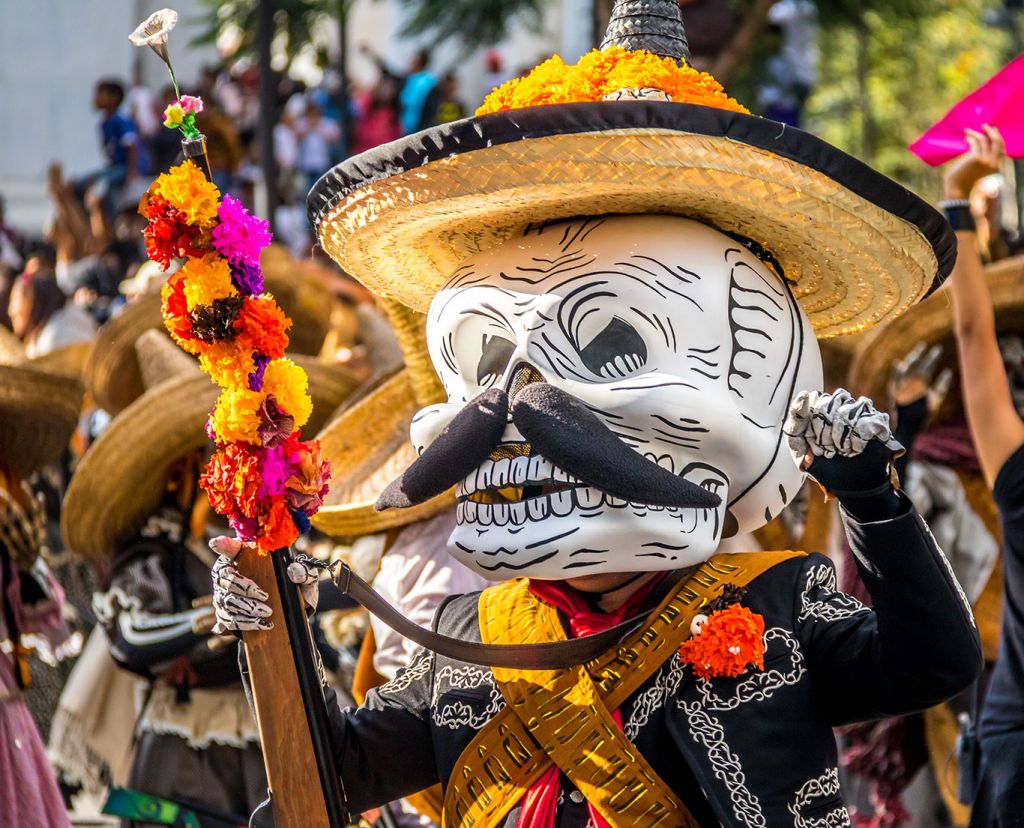
Key Facts
- They may coincide, but the Day of the Dead has no connection with Halloween or the Christian tradition of All Souls’ Day.
- Learning a bit of conversational Spanish will help you no end when trying to join in with the fun.
- Always ask permission before taking photographs – a little courtesy goes a long way.
Get on Board
- 7-night ‘Mexican Riviera’ cruise, round-trip from San Diego via Cabo San Lucas, Mazatlan and Puerto Vallarta, disneycruise.disney.go.com
- 7-night Western Caribbean cruise, round-trip from Fort Lauderdale via Key West, Costa Maya, Cozumel and George Town, celebritycruises.co.uk